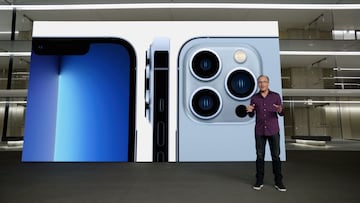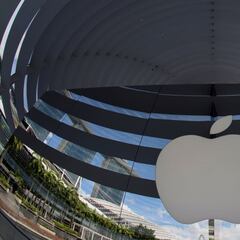iPhone 13 vs iPhone 13 Pro comparison: price, color, size, screen, features...
Details of the iPhone 13 have been released and many looking to buy have one question: is the investment in the Pro model worth the higher price tag?


Apple launched the new iPhone 13 at Tuesday’s California Streaming event, and alongside it the iPhone 13 Pro and Pro Max and the iPhone 13 Mini. The four new iPhones 13 slot straight into the same spots in the line up as their predecessors the iPhones 12, and all maintain the same price points, indicating that Apple are pretty happy with the strategy. Comparing the specs of the four different models, Apple have made it fairly easy for most buyers to be able to pick the phone that’s right for them, often only needing to really focus on one or two specs, plus the price.
Introducing iPhone 13 and iPhone 13 Pro, all-new iPad mini, Apple Watch Series 7, and so much more! Check out the highlights from today’s #AppleEvent. pic.twitter.com/2Vas3M4NB4
— Tim Cook (@tim_cook) September 14, 2021
iPhone 13 or iPhone 13 mini or iPhone 13 Pro or iPhone 13 Pro Max?
We’ll go into detailed specifications below, but, talking very generally, the iPhone 13 is the iPhone for most people, bringing with it a solid camera, fine screen, and starting price of $799. If you want the smallest new iPhone, you go for the iPhone 13 mini, which is identical to its bigger brother, but $100 cheaper at every storage point; you do get a smaller screen (5.4 inch vs 6.1) and smaller battery so slightly diminished battery life, but not much.
If on the other hand you want the biggest screen going, and are willing to splash for it, you should go for the iPhone 13 Pro Max, with a 6.7 inch screen, starting at $1099. That also gets you a much nicer screen, with 120hz ProMotion for much smoother refreshing, as well as a better camera unit, with three cameras rather than two on the iPhone 13 and iPhone 13 mini. The battery life is also greater on the Max, with its bigger body space allowing a larger battery to be crammed in.
If you want the nicer screen and the better camera unit but don't want the size of the Pro Max, then the iPhone 13 Pro is the one for you, starting at $999. One another potentially compelling reason to go for a Pro model is to get the possibility of a full 1TB of storage. The non-Pro phones only go up to 512GB this year.
iPhone 13 vs iPhone Pro detailed specifications
iPhone 13 and iPhone 13 mini: screens and prices
The iPhone 13 and iPhone 13 mini are available in five colours: (PRODUCT) RED, Starlight (white), Midnight (dark grey), Blue and Pink.
Both have Super Retina XDR OLED displays, 5.4 inch for the mini (2340 x 1080 pixels) vs 6.1 inch for the standard (2532 x 1170). The mini actually has a higher pixels per inch at 476 vs 460 ppi.
The screens hit a typical brightness of 800 nits (1200 with High Dynamic Range) and offer True Tone and Wide Color (P3).
Pricing is directly related to the capacity of the phone:
iPhone 13: 128GB - $799; 256GB - $899; 512GB - $1099
iPhone 13 mini: 128GB - $699; 256GB - $799; 512GB - $999
Note that for these two models the pricing in the US requires buying the phone connected to a carrier, it’s $30 higher if you buy unconnected to connect on your own later.
Pro Models: Screens and Prices
The Pro models meanwhile are available in four colours: Graphite, Gold, Silver and Sierra Blue.
The standard Pro has a 6.1 inch Super Retina XDR OLED display with ProMotion and the same pixel count as the iPhone 13 (2532 x 1170 at 460 ppi), while the Max is rocking a 6.7 inch Super Retina XDR OLED display with ProMotion with 2778 x 1284 pixels (458 ppi).
The standard brightness for these displays is higher than their non-Pro siblings: 1000 nits typical and 1200 HDR; they also feature True Tone and Wide Color (P3).
Pricing is again based on capacity:
iPhone 13 Pro: 128GB - $999; 256GB - $1099; 512GB - $1299; 1TB - $1499
iPhone 13 Pro Max: 128GB - $1099; 256GB - $1199; 512GB - $1399; 1TB - $1599
Curiously there’s no additional cost if you decide to connect on your own later, unlike for the iPhone 13 and iPhone Mini.
Battery life
All four models have a non-user replaceable lithium-ion battery, with the battery life going up as you go up through the models. Apple claims all the iPhones 13 have a notable capacity on last year’s models, but don’t actually give expected life in “real world conditions”, offering instead hours of video or audio playback.
For streamed video playback:
iPhone 13 mini: 17 hours
iPhone 13: 19 hours
iPhone 13 Pro: 22 hours
iPhone 13 Pro Max: 28 hours
The bottom line is that brand new, any of these phones is going to last a day even with fairly heavy usage, while the Pro Max might even get through a second day.
Cameras
One of the main differences between the Pro and non-Pro iPhones 13 are the camera units. The iPhone 13 and iPhone 13 mini sport the same dual camera system, while the Pro models have an identical three-camera unit.
The really big difference is the addition of a Telephoto camera on the Pro models, in addition to the Wide and Ultra Wide cameras you get on the basic models. Note though that the Wide and Ultra Wide cameras are also better on the Pro models. The Pro Wide has an aperture of 1.5 compared to 1.6 for the non-Pro, while the Ultra Wide is 1.8 vs 2.4 (lower aperture means more light gets in, means better photos).
The Pros have 6x optical zoom in total, and digital zoom up to 15x, while the non-Pro models have 2x optical zoom and only 5x digital zoom.
All four models offer night mode (which gathers an impressive amount of light), but the Pro camera units also have the option of night mode portraits thanks to the LiDAR scanner the non-Pro models don’t have, and they also offer a new Macro mode which the iPhone 13 and iPhone 13 mini lack.
All the models though offer Portrait mode with bokeh and Depth Control (you can adjust the bokeh after taking the photo). And the wide lens on the standard model now incorporates sensor-shift optical image stabilisation, which was only on the Pro Max model last year, and is a nice upgrade for the standard and mini models.
The front facing cameras are almost identical, with the non-Pro models requiring the same tech to be able to do Face ID correctly.
Video recording
For video all the iPhones 13 offer Apple’s new cinematic mode, which can adjust depth of field after recording, as well as HDR video recording with Dolby Vision up to 4K at 60 fps and 4K video recording at 24 fps, 25 fps, 30 fps, or 60 fps. Of course you also get the better zoom options on the Pro models, and there’s a ProRes video recording feature.
Specs where the standard and Pro iPhones 13 are the same
All these phones use the same chip, the new A15 Bionic, which is blazingly fast and more than enough to handle most things you can throw at any model of the iPhone 13.
IP68 water resistance, a maximum depth of 6 metres for up to 30 minutes. Apple still do not recommend you deliberately put the phone in water, so best not to take underwater photos, no matter how tempting. You can get cases for that.
All the iPhones 13 use Face ID to unlock the phone, as well as enable certain transactions including Apple Pay. The notch on all the phones this year is some 20% smaller.
5G is standard on all iPhones 13, including sub-6 GHz and mmWave. They also all have Wi-Fi 6 (802.11ax) and Bluetooth 5.0, along with Ultra Wideband chip for spatial awareness and NFC with reader mode.
Video and audio calling is pretty much identical on all four models of the iPhones 13, with the Pro models offering optical zoom with the rear-facing camera compared to digital zoom on the iPhone 13 and the iPhone 13 mini.
All the iPhones 13 continue to use Apple's proprietary lightning port, but don’t ship with a charger in the box. They also all work with the wireless MagSafe standard, which magnetically attaches to the back of the phone to charge.
Accessibility, which is generally excellent on iPhones, is identical on all models.
And of course they all use iOS 15, the phone’s operating system, that Apple proudly claims is, “the world’s most personal and secure mobile operating system, packed with powerful features and designed to protect your privacy.” What’s new in iOS 15.
Which iPhone do I choose?
If you've decided an iPhone 13 is for you (remember Apple still sell older models at discounted prices compared to when they were new), how do you go about choosing which model? Of course everyone is an individual, but our simplified approach is as follows:
If you're struggling to decide and none of the Pro features seem compelling, get the standard iPhone 13. It's a fine phone and the feature set will be more than enough for most. If there's something you desperately want on a phone, you'll likely already know that and it will be driving your decision.
If you want the smallest brand new iPhone, get the mini. You get all the tech of the standard model in a neat package. Some people are less bothered by screen size or are keen to have more space in their pockets, and for them the mini is perfect. It's also great if you like being able to reach all or most of the screen using the phone one handed.
If you really love taking photos but aren't bothered by, or do not want a huge screen, and can afford it, step up to the iPhone 13 Pro. You also get a nicer screen, and the option of 1TB of storage, plus a few other bells and whistles.
Related stories
And finally, for people who crave the largest possible screen then it has to be the Pro Max, which offers value for money despite its steep price - but it is a hefty price for a phone.
The new iPhones 13 can be ordered from 5pm on Friday 17 September and will be available from 24 September.

